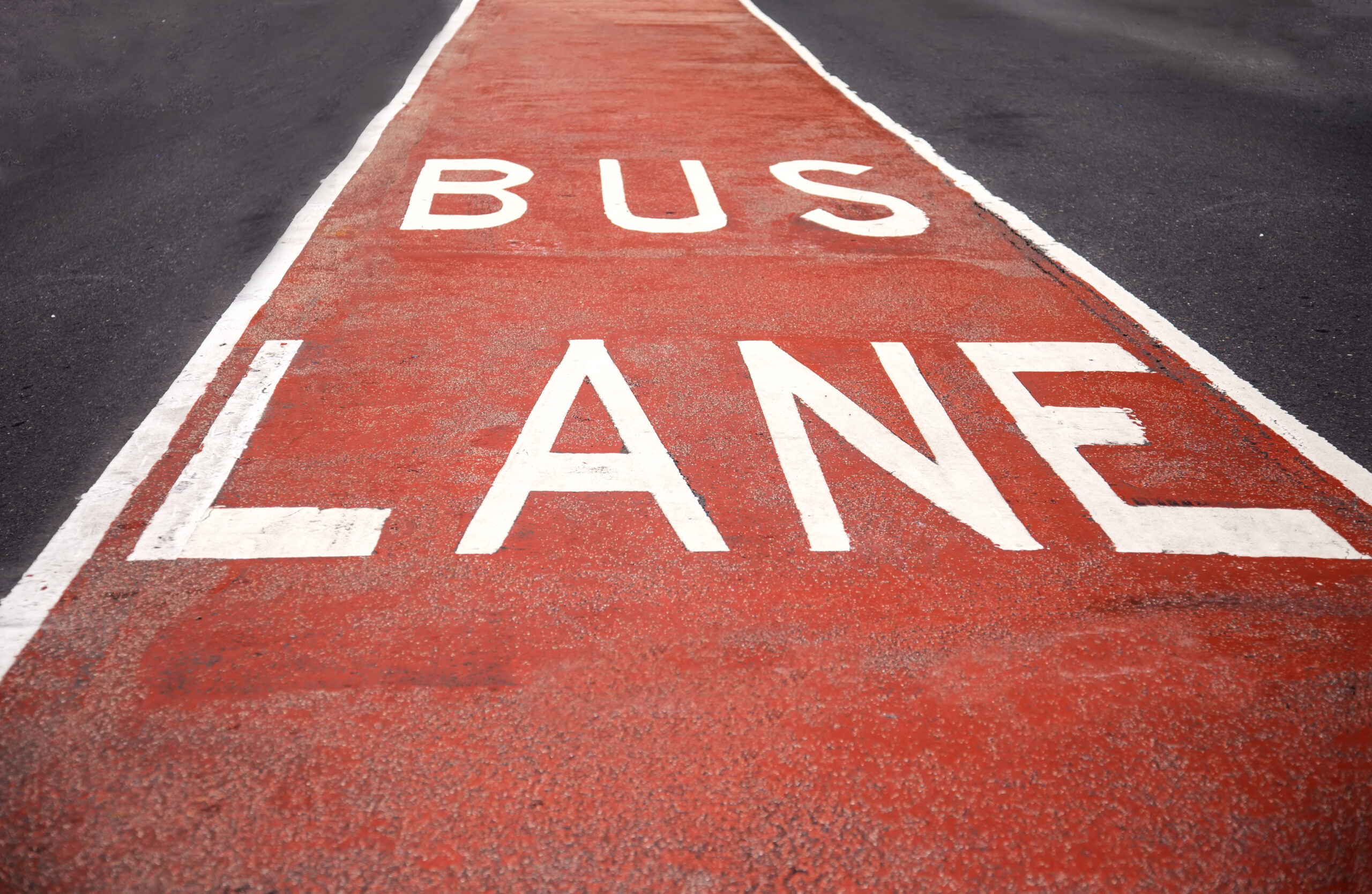Dedicated bus lanes are designed for one thing and one thing only, public transit buses.
As city landscapes change and grow, perfectly timed green lights (like the ones in East Palo Alto), also know as transit signal priority, more intelligent routing, better bus stop design, and bus lanes are making public transit more efficient.
In an effort to keep these dedicated bus lanes clear and moving, some cities have implemented automated bus lane enforcement methods, from ticketing to cameras. With bus-only lanes specifically created to improve all traffic congestion and flow, regular motorists in a bus lane can cause back-ups.
While some transit agencies have resorted to automated camera enforcement, motorists and ride-share drivers have become creative in avoiding a ticket…
Dedicated Bus Lane Enforcement & How It Works:
Quick, here is a rundown on how designated bus-only lane enforcement works:
- A motorist parks and or is driving in a bus lane
- Utilizing the help of a camera or multiple on the front of the bus, along with artificial intelligence driven analytics, the vehicle is identified by license plate recognition
- Similar to how red light cameras operate, the license plate photos are collected, processed, and sent to a ticketing center
- The motorist must pay a fine for their bus lane-only infraction
Once again, this is an attempt to avoid slow-downs that have a trickle effect on not just public transit riders but all motorists when dedicated bus lanes are clogged.
While many follow the rules and don’t use dedicated bus lanes, that are some frequent offenders who have found a workaround.
How Some Are Avoiding the Bus Lane Camera Ticket
Automated Bus Lane Enforcement (ABLE) is effective, but that doesn’t mean it is a catch-all. And some drivers have gotten smarter.
Rideshare drivers for companies like Uber and Lyft or your everyday food delivery driver recognize that there can be penalties for parking in or using committed bus lanes. But some have discovered a workaround:
Pop the trunk.
While sitting in a bus lane waiting for a passenger or completing a delivery, some drivers have begun to pop their trunks in the event a bus with automated enforcement capability approaches.
Covering a license plate to avoid recognition is illegal, but technically there is no rule against a driver popping their trunk (however, using a dedicated bus lane is an infraction).
Recently, to crack down on all bus lane infractions, Manhattan police took to the buses and issued tickets to help enforce bus lane rules for riders. The frequent flyers? This may or may not surprise you:
- UPS
- Verizon
- FedEx
- Con Edison
Many delivery drivers and service vehicles (commercial vehicles) are often routed to pull over in certain areas and may “quick stop” to deliver something in a designated bus lane.
However, rules are rules, and traffic enforcement via ticketing or automation keeps city buses moving and serving their citizens without having to deal with blockages.
Another way that the team at LYT is helping cities with traffic management and public transit efficiency is by harnessing LYT.status and LYT.transit!
Other Public Transit News:



